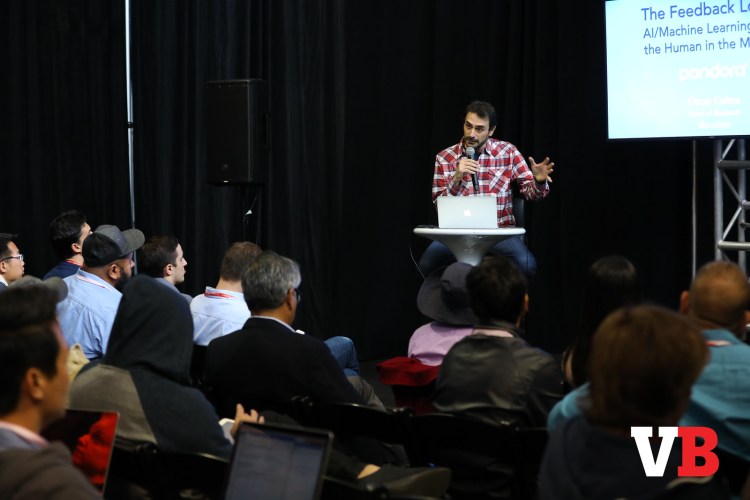Pandora uses machine learning to find music recommendations, and anyone who likes indie music is likely going to benefit.
In my experience, searching for a synth-rock band like Novo Amor usually yields only a few suggestions on most platforms. On Pandora, it helped me find other bands I might like, such as The Paper Kites, and reveals how AI can provide some powerful benefits. Most of them, it turns out, are related to the sheer scale of the music available.
In case you didn’t know, Pandora analyzes a database of music to look at over 450 attributes. Labels attached to a song might include a subtle acoustic guitar or a slow, sad tempo. In my case, Novo Amor might be described as lilting, atmospheric guitar rock for people who like the lyrics of The National but not the driving percussion and grungy guitars. (Yes, music fans can get pretty specific.)
At MB 2017, Oscar Celma, who is the head of research at Pandora, explained how recommendation engines like the one used at Pandora (which can access the 80 billion thumb votes from 76 million users) also benefit from real human listeners, called curators.
June 5th: The AI Audit in NYC
Join us next week in NYC to engage with top executive leaders, delving into strategies for auditing AI models to ensure fairness, optimal performance, and ethical compliance across diverse organizations. Secure your attendance for this exclusive invite-only event.
The truth is, a bot can annotate music only to a certain extent. Data is not the only determining factor. Humans have a unique ability to sense the “feel” of music and, with Pandora, there is a team of experts who fine-tune the recommendation engine, which is mostly de-cluttered by AI. It might be one reason I discovered The Paper Kites.
“Most of the songs are annotated by experts,” said Celma. “We are trying to promote the long tail to extend and replace music for you. Machine learning engineers are very excited to work with 80 billion thumbs, using category filtering. They extract a lot of meaningful data.”
The “magic” is a combination of leveraging human knowledge with the machine learning they are using. Curators keep the catalog up to date, said Celma. There are thousands of weekly releases, and humans cannot process them all. (Apparently there are a lot of indie artists.) Curators do often find the best artists to play on Pandora.
Celma said machine learning is assistive. The human curators can discover an artist, but the machine learning can prevent a “fake” artist from being ingested into the music libraries. It can also find duplicates. Mostly, the process of human versus bot is about scale. Without machine learning, curators would not be able to make it all work.
“When you are searching for content, you want to avoid noise,” said Celma, making an unintentional machine learning joke. “The AI weeds out the bad search results, phasing out the worst offenders. This is sent to curators, who then decide whether to remove songs.”
Of course, there’s a question whether bots will ever replace humans at tasks like recommending music at any point. Maybe so. The bots will someday learn to have empathy and judge music for how it feels. We’ll see how long that takes, but for now, the music recommendations are (thankfully) human-assisted … and incredibly helpful.


